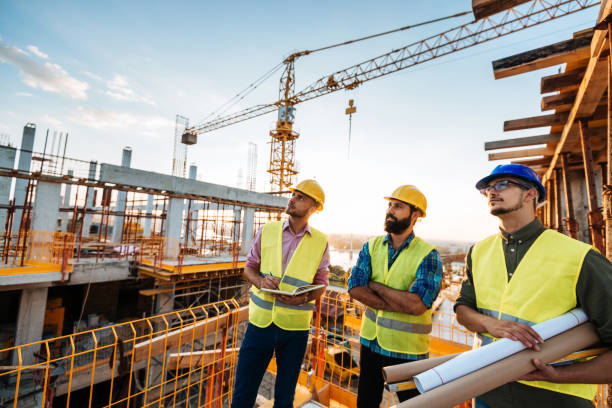
[ Residential/Commercial Construction ]


Residential and commercial construction are two pillars of the building and infrastructure industry, each serving distinct purposes but often overlapping in principles, materials, and methodologies. Residential construction refers to the process of building, renovating, or expanding dwellings meant for private living, such as houses, apartments, condominiums, and townhomes. Commercial construction, on the other hand, encompasses structures used for business activities, including office buildings, retail spaces, warehouses, hospitals, hotels, and educational institutions. While both types of construction require meticulous planning, budgeting, and execution, their scale, complexity, regulations, and end-user requirements vary significantly. Residential construction typically prioritizes comfort, aesthetics, and functionality tailored to family or individual needs. It involves a more personal engagement between homeowners and builders, as the outcome directly affects daily living. The construction process begins with site evaluation, followed by architectural planning that factors in the client’s preferences, family size, lifestyle, and budget. From the foundation to roofing, the focus remains on creating a safe, energy-efficient, and livable environment. Materials like brick, concrete blocks, steel, wood, and modern composites are commonly used, with a growing emphasis on sustainable alternatives. Technologies such as smart home automation, solar power integration, and eco-friendly insulation have become popular in modern residential projects. Additionally, the rise of modular and prefabricated homes has revolutionized the industry by offering quicker turnaround times and cost-effective solutions.
In contrast, commercial construction is generally larger in scale and more regulated, often involving multiple stakeholders, including developers, investors, architects, engineers, and governmental authorities. The primary aim is to create a functional, durable, and efficient space for commercial activities that can accommodate large volumes of people and equipment. Projects can range from small retail shops to massive skyscrapers and industrial parks. Due to the diversity of functions these buildings must support, commercial construction often employs more complex HVAC systems, fire safety mechanisms, escalators, elevators, and sophisticated electrical and plumbing frameworks. Durability and compliance with zoning laws, safety codes, and accessibility regulations such as the ADA (Americans with Disabilities Act) are paramount. Materials used are generally more robust and industrial-grade, including steel structures, reinforced concrete, curtain wall systems, and advanced cladding solutions. The planning stage in both types of construction is crucial and typically involves site surveys, design blueprints, environmental assessments, and securing building permits. Residential projects might be more flexible, with room for customization, whereas commercial projects demand rigorous planning due to higher investments, larger workforce coordination, and extended timelines. Building Information Modeling (BIM) has emerged as a vital tool in both domains, enabling better visualization, coordination, and decision-making throughout the project lifecycle.
Another key difference lies in project management and execution. Residential construction may be handled by a small team or a general contractor, while commercial projects require large construction firms, specialized subcontractors, and often, phased scheduling. Delays in commercial projects can have significant financial implications, so project timelines are more strictly managed, often using critical path methods and digital scheduling software. In contrast, residential construction might accommodate minor delays or changes in scope more flexibly. Sustainability and innovation are shaping both sectors. Green building certifications like LEED (Leadership in Energy and Environmental Design) and IGBC (Indian Green Building Council) are becoming mainstream. In residential settings, this might translate to solar panels, rainwater harvesting, or low-emission paints. In commercial environments, it could involve high-performance glazing, smart lighting systems, water recycling plants, or green roofs. Both sectors are also adopting AI-driven project management tools, drones for site inspection, and IoT devices for real-time monitoring and maintenance.
Moreover, urbanization and population growth continue to drive demand for both residential and commercial spaces. In developing regions, the focus is often on affordable housing and infrastructure development, while developed cities are seeing a boom in mixed-use projects that combine living, working, and leisure spaces under one roof. This trend blurs the lines between residential and commercial construction, demanding innovative architectural solutions that are both functional and aesthetically cohesive. In conclusion, residential and commercial construction are interconnected yet distinct fields that contribute significantly to the economy, societal development, and the built environment. While residential projects focus on comfort, privacy, and individual needs, commercial projects prioritize efficiency, safety, and scale. With evolving technologies, sustainable practices, and growing urban demands, both sectors are poised to adapt and thrive, creating smarter, greener, and more resilient spaces for living and working.
Explore More








